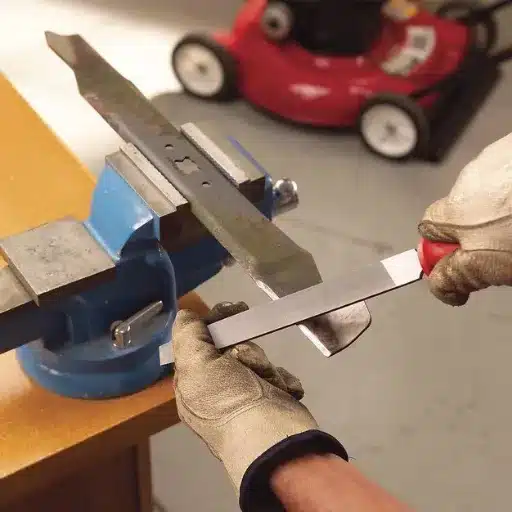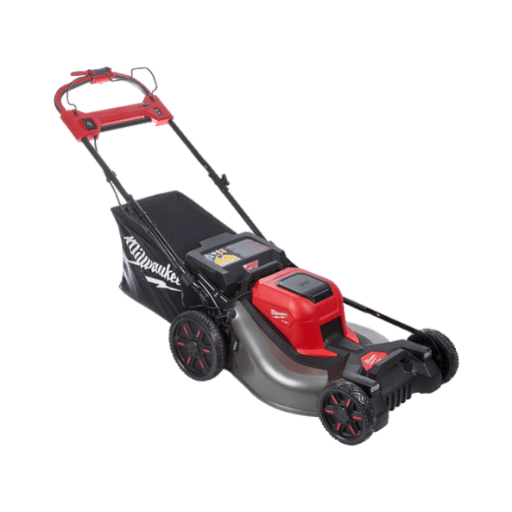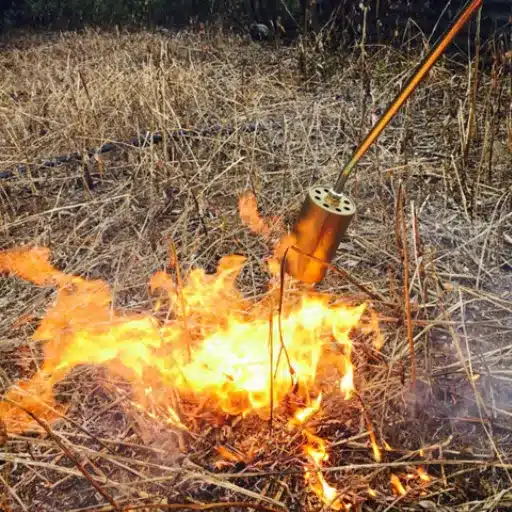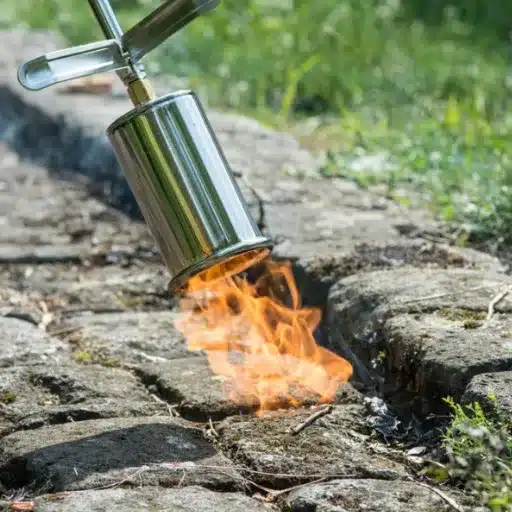In machine embroidery, selecting the right stabilizer is essential, especially when dealing with fabrics such as polyester. With this guide, you can differentiate the different types of stabilizers and the functions they perform when working on embroidery projects with polyester materials. This guide will also help explain the differences between cut-away, tear-away, and wash-away and tell us the uses of each. Further, we will also determine the best types and textures of stabilizers that would be the most suited for ensuring proper stitching of your designs so they last well without losing their attractiveness. This guide will be helpful to both beginners and experienced embroiderers understand how stabilizers work in their projects.
What Stabilizer Should I Use for Polyester in Machine Embroidery?

In machine embroidery, polyester works best with a medium-weight cutaway stabilizer. This type has the advantage of permanently supporting the fabric to ensure that the embroidery will not lose shape with time. Polyester tends to be stretchy or moveable, and the cut-away stabilizer assures minimal stretch during or after stitching. As opposed to tear-away or wash-away, cut-away is permanently placed between the fabric and the garment for enhanced strength, which withstands the wear and tear on the clothing. Suppose you are working on a design that is particularly demanding. In that case, a temporary adhesive spray is an excellent solution for holding the stabilizer onto the fabric before embarking on the embroidery.
Understanding the Type of Stabilizer for Polyester
I primarily rely on a medium-weight cut-away stabilizer when working with polyester in machine embroidery. This choice is based on its ability to offer robust and long-lasting support, especially critical given polyester’s tendency to be stretchy or slippery. The reliance on a cut-away stabilizer is mainly because it stays within the fabric permanently, ensuring that my embroidery remains intact and free from distortion over time. Furthermore, if I tackle a particularly intricate design, a temporary adhesive spray can be handy to firmly secure the stabilizer to the polyester. This combination helps me achieve consistent, high-quality results in my embroidery projects.
Factors to Consider When Selecting a Stabilizer
To get your embroidery project off on the right foot and guarantee that it lasts for a long time, there are a few essential criteria that the user should always consider while selecting a stabilizer –
Consider your fabric-stretch, shear, or density factors: Polyester materials that are stretchable or slippery work best for medium-weight cut-away stabilizers.
Consider the complexity of the designs: More support is required for the more interesting and detailed designs. A stronger stabilizer and/or temporary adhesive spray may help keep the design in place.
Consider the stabilizer’s weight: A lightweight stabilizer should not be used on heavy-weight fabrics. Medium to heavyweight stabilizers would be suitable for dense fabrics or fabrics that are meant to be heavily embroidered.
Consider the need for Permanent vs. temporary: Depending on your project, you may want a cut-away, which is a permanent stabilizer, or a tear-away or wash-away, which is temporary.
Consider the Environmental Conditions: Never forget about humidity and temperature, as they can impact the fabric’s stability and the adhesive’s bond.
It is prudent to consider all these essential factors and choose a stabilizer appropriate for your fabric and design, creating a win-win situation in all your endeavors.
Common Mistakes to Avoid with Embroidery Stabilizer
When using embroidery stabilizers, several common mistakes can lead to unsatisfactory outcomes. Firstly, using the wrong type of stabilizer can cause issues such as puckering or distortion. To avoid this, ensure the stabilizer matches the fabric type and design complexity. Secondly, insufficient stabilization is another prevalent error; always use enough stabilizer to support the fabric and the embroidery design, particularly for large or dense stitch patterns. Thirdly, incorrect placement or securing of the stabilizer can result in misaligned designs, so utilizing temporary adhesive spray or pinning the stabilizer can prevent movement during stitching. Lastly, be cautious not to overlook environmental factors such as humidity and temperature, which can affect stabilizer performance and fabric stability. By understanding and avoiding these common pitfalls, you can enhance the quality and durability of your embroidery projects.
How to Hoop the Stabilizer for Best Results?

It is essential to hoop the stabilizer accurately to obtain the desired outcome in machine embroidery. First, take a stabilizer and cut it to a size larger than the embroidery hoop you are using. Place the stabilizer underneath the fabric, covering the whole area to be stitched. Take the fabric and stabilizer and place them over the inner hoop. Lower the outer hoop slowly while pushing down the fabric so it is in a perfect position without excessive tension. Hold the thicker part of the screw of the hoop and pull on the edges of the fabric to maintain even tension on it. The steps smooth out the edges of the fabric to prevent puckers and distortions in the fabric’s surface under the embroidery. Adequate hooping is needed to lock the stabilizer and the fabric in position, making stitching faster and embroidery clearer.
Techniques for Hooping Embroidery Stabilizer
In terms of hooped embroidery stabilizers, there are a few different methods I have experienced. For a specific project, let’s say for embroidering, I pick a thicker cut-away, a thinner tear-away, or even a wash-away, depending on the type of fabric and look I’m going for. You may also assume that I cut a piece of the stabilizer slightly larger than the hoop to avoid it slipping during the embroidery. There is no way around it. I start by lightly spraying the stabilizer or use a basting stitch setting which does the needful to avoid movement – again, when hooping the, You may also assume that I start by lightly spraying the stabilizer or use a basting stitch setting which does the needful to avoid movement of the fabric and stabilizer in the hoop. The fabric and stabilizer are both in the hoop, yet they are not pulled too much, so there is no significant pucker. Therefore, where the fabric is adjusted tension uniformly and the screw secured, then each step of the embroidery process and, even more ultimately, the stability is retained. These measures are correctly carried out, and the designs will be appropriately positioned and neatly embroidered as was the case throughout the trials.
Choosing the Right Embroidery Hoop for Your Project
While selecting an embroidery hoop suitable for my project, I have designed a few checklists to enhance the accuracy and quality of my projects. First, I check the size of the design that I am working on and try to pick out a hoop which both represents the design and is suitable to my embroidery machine if i am using one. I ensure that the hoop is not very big usually because a big hoop results in excess slack and ‘off-center’ placements of the fabric. Usually, the 6 or 8-inch hooped hammer does the job, but minor detail work may benefit from a 4-inch degree of the four-firmness ball to keep the control sock steady.
Another factor to consider is the material used for the hoop. Wood hoops are usually suitable for safely gripping the softest materials without damage, while thicker fabrics can have much better support with plastic and metal hoop tension. For example, the carpenter is a plastic poster. Stainless steel comes with cream plastic and satisfies me because it is challenging and easy to deal with. It also makes a difference how the screw system works. For example, when the ergonomic screw is thicker, it is easier to ‘mark’ when tightening it without pulling the fabric too much.
Alterations in size, such as diameter and height of the embroidery hoop, should also be noted as necessary because they can be very useful. Hops are usually between half an inch and an inch tall, as this height keeps the fabric well in place. When working on big projects on the machines, I always make sure that the size of the embroidery hoop used is a reasonable keyboard, which is normally in the range of 1 to 2 inches.
Keeping in consideration these parameters, the size and material of the hoop, and its screw mechanism and technical characteristics, I can confidently choose an embroidery hoop that will meet the requirements of my detailed projects perfectly.
Ensuring Stability During the Embroidery Process
Ensuring stability during embroidery involves focusing on fundamental techniques and tools that support a seamless workflow. I’ve found that using a quality stabilizer makes a significant difference. It helps manage fabric tension and prevents puckering, especially when working with more delicate or stretchy materials. Additionally, securing the fabric tightly within the hoop is crucial. I always ensure the fabric is taut but not overly stretched to avoid design distortion. The choice of needle and thread also affects stability; for dense designs, I opt for a sturdier needle and high-quality thread to withstand repeated punctures. Moreover, maintaining a consistent speed on the embroidery machine can reduce the likelihood of thread breaks and skipped stitches. By implementing these practices, I enhance the stability and precision of my embroidery projects.
When should you use Cut Away vs. Tear Away Stabilizer?

When deciding between cut-away and tear-away stabilizers, the key factors are the fabric’s characteristics and the design’s complexity. Cut-away stabilizers are ideal for stretchy fabrics, like knits and polyester, as they provide permanent support, preventing distortion over time. They are also recommended for intricate and dense designs, ensuring the embroidery remains intact through multiple washes and wears. In contrast, tear-away stabilizers are suitable for stable, woven fabrics with a lighter or less complex design. They support the fabric during the embroidery process and are easily removed by tearing around the design. For crisp stitches and minimal residue, tear-away stabilizers are a practical choice for temporary stabilization needs.
Differences Between Cut-Away Stabilizer and Tear-Away Stabilizer
Cut-Away Stabilizer
Usage: Most effective in finding problems with stretch or knit fabric; does have lasting firmness.
Design Complexity: Capable of accommodating elaborate designs that are densely stitched.
Removal: Cut away excess stabilizing medium around the design, but cut-out cuts do not come off.
Support: Endows the design with some permanence to avoid permanent deformation.
Technical Parameters: Standard weights for adequate support: 2.5 oz or more.
Tear-Away Stabilizer
Usage: It fits with stable, woven fabrics better suited to light constructions.
Design Complexity: Best for simpler designs.
Removal: After the embroidery, the design border can be shredded and removed.
Support: Provides short term assistance with the stitching, some residue is present from the seam.
Technical Parameters: Commonly sold at weights around 1.5 oz, support is overly light for the cloth on average set.
Choosing the Best Stabilizer for Your Embroidery Design
Choosing the correct embroidering stabilizer requires understanding the factors associated with the fabric and its design. Here’s a simple guide to help you make the proper choice:
Fabric Type:
Knits and Stretchy Fabrics: Use cut-away stabilizers since knitted fabrics are very stretchy, and this stabilizer type is used even after trimming.
Stable Woven Fabrics: For fabrics with a firm shape, suggest using tear-away stabilizers. This type stays while the stitching is going on and is easy to remove after completing the stitching.
Design Complexity:
For Dense or Complex Designs: Cut-away stabilizers provide the required support to the design for a long time. These are ideal for small and intricate embroidered patterns that are highly stabilized.
For Simple or Dimensional Designs: Tear-away stabilizers are generally required for simpler designs, especially on stable fabrics. They can be cleanly taken off and are less aggressive.
Technical Parameters:
Cut-Away Stabilizers: 2.5 oz is generally great or more since a lighter weight will not provide adequate support for the cutaway, and the design will not stand up to wear or washing.
Tear-Away Stabilizers: 1.5 oz gives a comfortable feel and texture but removes the decoupage easily without destroying the design or backing.
Determination of Purpose:
Long-Term and Heavy-use Designs: Heavy distortions, such as cut-a-way stabilizers, should always be preferred, as the cutaway remains undisfigured after a very long period of time.
Decorative or Occasional Designs: Tear-away stabilizers are best suited for applications where the strength of the finished design is less important than the convenience of removing it after completing the stitch-out.
With these considerations, you will be able to select a suitable stabilizer that is in line with the desired outcome of the design and the fabric properties, resulting in the successful completion of your embroidery undertakings.
Removing Excess Stabilizer After Completion
When it comes to removing excess stabilizers from my embroidery projects, I focus on preserving the integrity of my design while ensuring the fabric looks clean. I gently tear away the excess for tear-away stabilizers, being careful not to pull or distort the fabric, especially around intricate designs. I use sharp scissors to trim close to the stitching for cut-away stabilizers, keeping a small margin to maintain support without compromising the design. When working with water-soluble stabilizers, I rinse the fabric in cool water until the stabilizer dissolves completely. The critical technical parameters I consider include using appropriate weights for different stabilizer types (e.g., 2.5 oz for cut-away and 1.5 oz for tear-away) to ensure removing them doesn’t damage my work. These methods ensure my projects remain professional-looking and durable over time.
Why is Embroidery Backing Important?

Embroidery backing is crucial because it provides stability and support to the fabric during the embroidery process. The fabric can shift without proper backing, leading to uneven stitches and potentially damaging the design. Backing ensures the fabric maintains its shape and tension, preventing puckering or stretching. It also acts as a foundation, helping to hold the stitches in place and enhancing the durability of the embroidered piece over time. Furthermore, using the right backing contributes to the overall appearance and quality of the finished product, making it an essential component of successful embroidery projects.
Role of Embroidery Backing in Stability
Embroidery backing is vital in maintaining fabric stability during the embroidery process. By providing a stable foundation, the backing prevents the fabric from shifting or distorting, ensuring even and precise stitches. This stability is essential for avoiding puckering and maintaining the design’s integrity. Corresponding technical parameters are crucial in choosing the correct backing to ensure optimum strength. For example, using a 2.5 oz cut-away stabilizer is recommended for dense designs or high-stretch fabrics to provide lasting support.
In comparison, a 1.5 oz tear-away stabilizer works well for lighter fabrics or less dense designs, offering temporary support that can be removed easily post-embroidery. Water-soluble stabilizers are better suited for delicate lacework or freestanding lace designs where the stabilizer must be removed entirely. Correctly selecting and applying these technical parameters will enhance the longevity and professionalism of the embroidery project.
Types of Embroidery Stabilizer Used as Backing
When embroidering, stabilizers, which are used as backing, are essential. However, they come in various types, so there is no one-size-fits-all solution. Below is a discussion of the most typical ones:
Cut-Away Stabilizers: These are best used on intricate designs and elastic fabrics like knits. Since cut-away fabric stabilizers are meant to stay on the fabric after sewing, they give the fabric support for the embroidery stitch. It is suggested to use 3-4 cuts as appropriate for this parameter. Its parameters are in the range of 2.0, especially when stretchable material is used, and 3.0 when non-stretchable material is used.
Tear-away stabilizers are ideal for embroidered stable woven fabric without much design and are meant to last long. They can easily be torn out without much remaining after the piercing stitch. They weigh between 1.5 and 2.5. Tear-away stabilizers are best suited for situations where the emphasis is on making fast stitch-outs that do not require intensive force.
Water-Soluble Stabilizers: Fabric with water-soluble properties can only be used on light projects such as lace embroidery. It can easily wash out with zero waste, a great selling point for this kind of fabric. It can be used on many projects, but appliqué or fabric covering isn’t an option.
As discussed above, various types of the above-mentioned fabrics can be combined, and the entire process of embroidery is made easier if the right type of fabric is chosen. This increases the odds of creating a more beautiful and long-lasting finalized design.
How Do I Choose the Correct Stabilizer for Polyester?

When choosing the correct stabilizer for polyester, consider the properties of the fabric and the design. Polyester is typically smooth and prone to slipping, so using a cut-away stabilizer is often recommended for more permanent support due to its ability to withstand stretching and washing without breaking down. For lighter designs or where fabric stretch is less of a concern, a tear-away stabilizer may be appropriate if it provides sufficient support. Additionally, you may consider using an adhesive backing or a spray stabilizer to help prevent shifting for particularly slick polyester fabrics. Testing a sample piece with your specific design is a practical approach to ensure the stabilizer and fabric behave as expected during embroidery.
Guide to Choosing the Right Stabilizer for Polyester
When selecting the right stabilizer for polyester, I start by considering the specifics of my project. Polyester’s slippery nature often necessitates a more permanent stabilizer like cut-away, which offers robust support throughout washing and wearing. A tear-away stabilizer might suffice for less demanding designs, provided it maintains the fabric’s integrity. Additionally, using an adhesive backing can be beneficial to prevent shifting on slick surfaces. Ultimately, experimenting with a test piece is my go-to strategy to ensure that the chosen stabilizer harmonizes well with the fabric and the design, delivering a quality finish.
Using Stabilizer Selection Tools and Resources
Whenever stabilizer selection tools and resources are incorporated into a task, examining the embroidery type to be applied and the fabric features in question is crucial. Remember to look for tools that enable you to specify fabric characteristics such as types, weight, and even design details to recommend appropriate stabilizers. Most of the time, these tools will help address the following issues where applicable:
What is the best stabilizer for designs with more than 8,000 stitches and stretchable materials (like polyester)?
It is best to utilize cut-away for more than 8000 stitches designs, especially on knit fabrics.
What kind of stabilizer is appropriate for lightweight fabrics that tear away, and what type of stabilizer is preferred?
Tear-away can be used in designs not exceeding 5,000 stitches where minimum stretch and even slight support are needed.
What is the relevance of adhesive backings in connection with polyester fabrics for slippery materials?
Applying adhesive backings or sprays also helps to prevent the fabric from moving, which adds stability during the embroidery process.
What are some of the technical considerations that must be kept in mind when choosing a stabilizer?
The weight: This often measures between 1.5 oz and 3 oz per square yard. As density increases, more weight should be utilized.
The duration: in terms of longevity, cut-away, when compared to tear-away, it comes at the top.
Flexibility: Softer stabilizers should be selected to stabilize intricate designs requiring bending.
Using these tools helps select the appropriate stabilizer for the design and fabric, giving strength and operating efficiency without damaging clothing quality. In every case, adhere to manufacturer recommendations or other specialized sources.
Expert Tips for New to Machine Embroidery Users
Based on my experience as a Machine Embroidery amateur, it is all about the fundamentals of stabilizers to be able to answer this. First, when working on high-stitch designs, I usually reach for a cut-away stabilizer. I wouldn’t be surprised if it could handle more than 8000 stitches, and, especially for stretch fabrics poly, it has long-lasting support. Regarding lightweight fabrics, I prefer using tear-away stabilizers for around five thousand stitches because they provide that level of support that doesn’t put too much strain on the fabric. The last one would be adhesive backings when embroidering on slippery materials such as polyester; there is no way to avoid them as they hold everything correctly. Always remember that the weight and the strength of the stabilizer you use are significant—the stronger ones should be selected for solid designs. In contrast, a softer one is good when more flexibility is needed in more detailed work.
References
- All About Stabilizers for Machine Embroidery – This source provides comprehensive information on different types of stabilizers and their uses.
- Five Must-Have Stabilizers For Machine Embroidery – Offers insights into essential stabilizers for various embroidery projects.
- Choosing the right stabilizer | BERNINA embroidery tips – Offers professional tips on selecting the right stabilizer for your embroidery projects.
Frequently Asked Questions (FAQ)
Q: What stabilizer should be used with polyester on an embroidery machine?
A: When machine embroidering on polyester, a cut-away stabilizer is best. It provides the necessary support during stitching and maintains the quality of the embroidery after the excess stabilizer is trimmed away.
Q: How do I know which stabilizer for machine embroidery is suitable for polyester?
A: The right embroidery stabilizer depends on the type of fabric and the embroidery design. For polyester, a medium—to heavy-weight stabilizer would typically offer the best results, preventing puckering and distortion.
Q: Can I use a tearaway stabilizer on polyester for machine embroidery?
A: A tearaway stabilizer is generally not recommended for polyester as it may not provide enough support. Instead, a cutaway stabilizer or a fusible stabilizer is also used for better stability.
Q: What are the main types of embroidery stabilizers available?
A: The main types of embroidery stabilizers include cutaway, tearaway, washaway, and fusible stabilizers. Each type is best for specific tasks and fabric types, with cutaway being ideal for polyester.
Q: How does stabilizer weight affect the quality of polyester embroidery?
A: A heavier stabilizer helps maintain the design’s stability and prevents the embroidery stitch from distorting, especially on stretchy fabrics like polyester. The stabilizer weight should be chosen based on the density of the design.
Q: Is it necessary to use two layers of stabilizer on polyester?
A: Depending on the type of embroidery and the weight of the polyester fabric, using two layers can sometimes be beneficial for added support, particularly for intricate designs.
Q: Can a wash-away stabilizer be used for machine embroidery on polyester?
A: Wash-away stabilizer is generally not recommended for polyester as it may not provide long-term support. It is better suited for temporary stabilization, such as for topping on napped fabrics.
Q: How do I choose the right polyester embroidery stabilizer for machine embroidery?
A: Refer to a machine embroidery stabilizer guide, considering factors like fabric type, embroidery design complexity, and stabilizer weight. Allstitch embroidery supplies often provide comprehensive guides and product details.
Q: What is the role of a fusible stabilizer when working with polyester on an embroidery machine?
A: A fusible stabilizer adheres to the fabric, adding additional stability. This is particularly beneficial for fabrics that tend to shift or stretch. It also helps keep the fabric and stabilizer together during embroidery.









